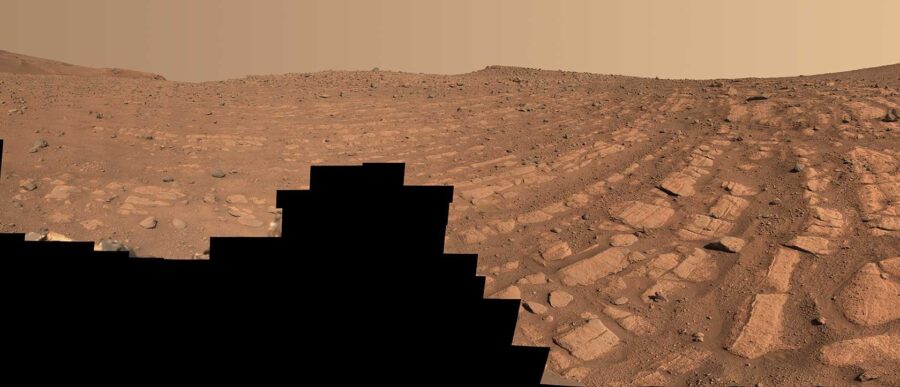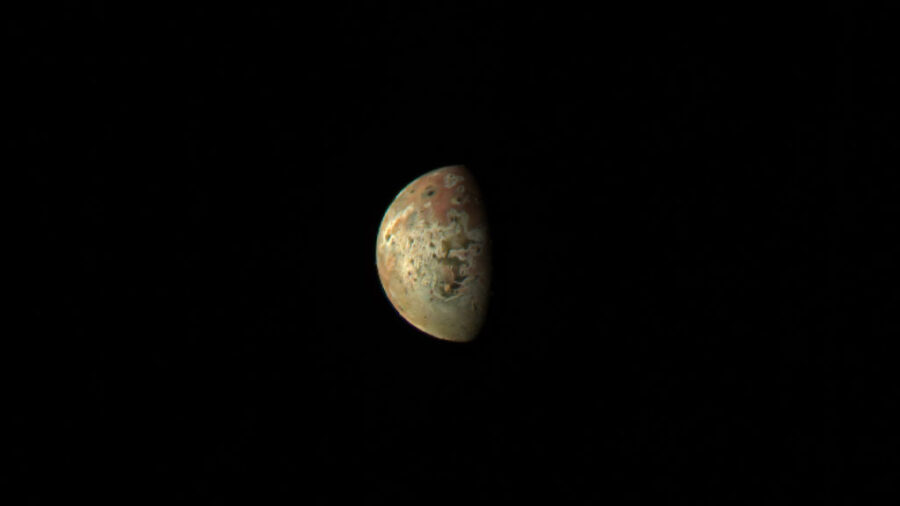NASA spacecraft are constantly sending back images from across the solar system. Here are two that caught our eye.
Perseverance at the Red River

NASA / JPL-Caltech / ASU / MSSS
NASA's Perseverance rover has been collecting samples in Jezero Crater since landing there in 2021. After exploring the crater floor, the rover is now driving toward the crater's river delta, where long ago a flood of water broke through the crater wall.
Perseverance is now driving along a fan-shape pile of sedimentary rock that stands 250 meters (820 feet) tall. Images of this region reveal rippling rows of cobbles, rocks that are between pebbles and boulders in size. For water to create this pattern, it would have to be flowing fast.
“Those [features] indicate a high-energy river that’s truckin’ and carrying a lot of debris,” says Libby Ives (NASA's Jet Propulsion Laboratory). “The more powerful the flow of water, the more easily it’s able to move larger pieces of material.”
The rock ripples could be the remnants of a river’s banks that shifted over time, or the remnants of sandbars that formed in the river. In either case, they were probably taller long ago, before sand and wind wore them down.
Read more from the Perseverance mission in the latest NASA press release.
Io Is Ready for Another Close-up

Image data: NASA / JPL-Caltech / SwRI / MSSS; Image processing: Kevin M. Gill (CC BY)
Io, the innermost of Jupiter’s large Galilean moons, is caught in a gravitational tug-of-war, pulled both by Jupiter and by the large moons Ganymede and Europa. The result of this inner torment is clear on Io’s surface, pockmarked with active volcanoes. And now, this violent world is coming into focus.
After completing two flybys of Jupiter’s largest moon, Ganymede, in 2021 and three flybys of Europa in 2022, NASA’s Juno spacecraft is inching closer to Io, with 11 flybys planned in total. In fact, as I type, the spacecraft is flying just 35,500 kilometers (22,060 miles) from the moon’s surface, right before it heads for its 51st close pass over Jupiter. (This flyby will bring it 16,000 km closer than it was when it captured the photo above.)
These flybys are more than photo opportunities, they are also instrumental in shifting Juno’s orbit. Now in its extended mission, Juno is flying ever closer to Jupiter in an effort to explore its moons and rings. This May 16th pass and the next one on July 31st will bring Juno’s orbit down from 38 days to 32 days.
Ultimately, this is all a warm-up for the closest passes yet: in December this year and February next year, Juno will fly just 1,500 km from Io’s surface. But its cameras won’t be turned toward the moon for these last passes, at least not until most of the flyby is already over. Instead, the spacecraft will be performing a radio experiment to examine the magma beneath the moon’s surface.
Read more about the upcoming flyby and the mission’s future plans in NASA’s press release.
 0
0









Comments
You must be logged in to post a comment.